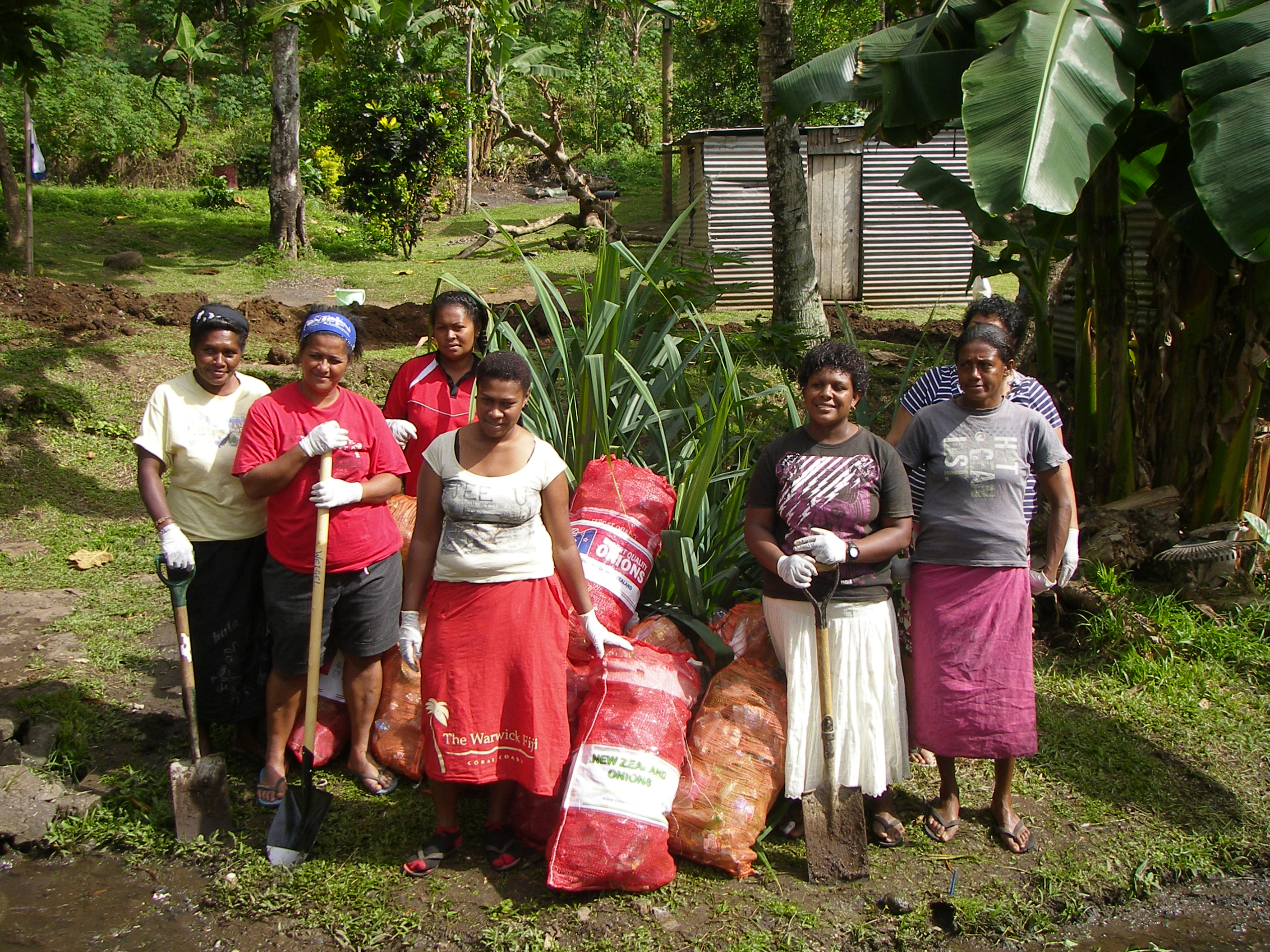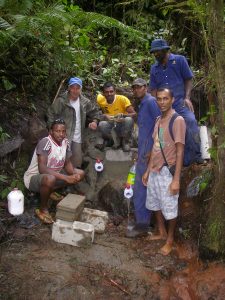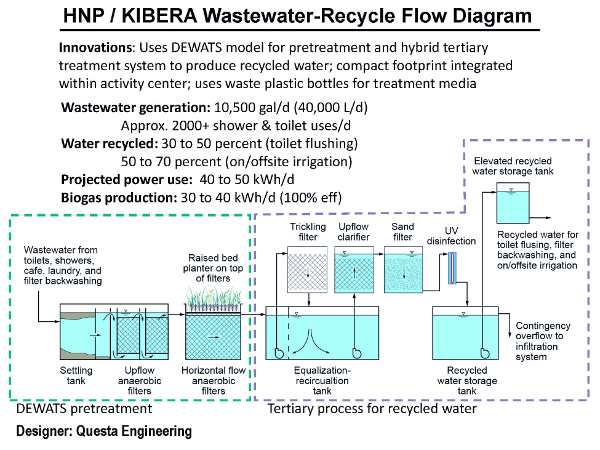Questa’s Humanitarian Water and Wastewater Activities
Responding to Global Water and Wastewater Needs
Every day hundreds of millions of people are impacted by the global water and sanitation crisis. Throughout many parts of the world people struggle to access the quantity and quality of water they need for drinking, cooking, bathing, handwashing, and growing their food. An even greater number lack access to basic sanitation facilities.
- Lack of Access to Clean Water. Currently an estimated 844 million people (1 of every 10 on the planet) lack access to clean water.
- Lack of Access to Sanitation. Globally 2.3 billion people, roughly one-third of the world population, do not have access to basic sanitation. It is estimated that nearly 900 million of these people practice open defecation.
- Water Borne Diseases. Contaminated water causes disease and even death, especially among children. Every day, more than 800 children under age five die from diarrhea attributed to poor water and sanitation. It is estimated that half of the world’s hospital beds are occupied by patients suffering water borne diseases.
- Together, unsafe water and the inaccessibility of basic sanitation are leading contributors to extreme poverty. Without clean, easily accessible water, families and communities are locked in poverty for generations. Children drop out of school and parents struggle to make a living. Access to clean water and improved sanitation changes everything.
Over the past 10 years engineers from Questa have volunteered their time and expertise providing international and humanitarian water and sanitation assistance in different parts of the world, including projects in Mexico, Africa and the Pacific Islands. This has been mainly through cooperative work with Rotary International, Engineers Without Borders and other non-profit humanitarian organizations. It has evolved through personal and professional motivation, along with the realization that Questa possesses a unique set of skills and experience that are directly applicable to the pressing needs for water supply and wastewater solutions in developing regions around the world. Our depth and breadth of experience comes from over 35 years of working with rural water and wastewater projects in a very diverse range of environmental conditions, coupled with strong understanding of earth and water science and a penchant for innovative solutions. Our work with system operations as well as design has sharpened our understanding and ability to develop practical, sustainable rural water and wastewater solutions for communities where centralized water infrastructure is unavailable.
Technologies – Conventional and Innovative
In general, we understand the value and lean toward the use of many of the tried-and-true water and sanitation technologies, such as slow sand filtration, that have been in use for a very long time. We have enjoyed the satisfaction of bringing and teaching these low-tech, but highly effective methods to communities and areas in need. Adapting appropriate technologies to local circumstances, materials and resources drives our enthusiasm for this work. The need for creativity has also allowed us to bring innovative methods and solutions to address some of the most pressing environmental challenges in developing countries. An example is our innovative method of repurposing plastic bottle waste for water filtration and drainage applications – creating a win-win approach that can help address the dire needs for improved sanitation while also combating the plastic waste menace littering and inflicting serious environmental damage virtually everywhere.
Biosand Water Filters
 The biosand filter is an innovative, small-scale version of the slow sand filter intended for household use, developed in the 1980s by a Canadian, David Manz. It was developed specifically for application in regions of the world where people are dependent on retrieving their drinking water from ponds and streams and other unprotected and questionable sources, typically hauled in buckets and jerry cans. There are now millions of biosand filters in use around the world. The classic design consists of a concrete or plastic container about the size of an office water cooler, filled with layers of sand and gravel. Dirty water is poured into the top of the filter and travels downward through a 0.4-meter depth of fine sand where the filtration and biological treatment of the water occurs. The water collects in a layer of gravel at the bottom of the container, and then exits the filter through a perforated pipe configured to drain into clean containers.
The biosand filter is an innovative, small-scale version of the slow sand filter intended for household use, developed in the 1980s by a Canadian, David Manz. It was developed specifically for application in regions of the world where people are dependent on retrieving their drinking water from ponds and streams and other unprotected and questionable sources, typically hauled in buckets and jerry cans. There are now millions of biosand filters in use around the world. The classic design consists of a concrete or plastic container about the size of an office water cooler, filled with layers of sand and gravel. Dirty water is poured into the top of the filter and travels downward through a 0.4-meter depth of fine sand where the filtration and biological treatment of the water occurs. The water collects in a layer of gravel at the bottom of the container, and then exits the filter through a perforated pipe configured to drain into clean containers.
Questa developed an expanded version of the biosand filter (pictured and diagrammed here) as part of rural village and school water system improvements on the Fijian island of Taveuni. The design adapted the main treatment features of the biosand filter for use with a piped water source, including a companion storage tank to hold the treated water and allow removal via a standard tap. A conventional tank float valve was used to automatically control the flow of water through the filtration system based on the water level in the storage tank. Questa provided training and oversight for the construction of over 40 biosand filters of this expanded design for communal use at schools and villages in Taveuni. The design has been adopted by the Ministry of Education and is being taught in the high schools and promoted for use throughout the Fijian Islands.
Repurposing Plastic Waste for Water, Drainage and Wastewater Improvements
Plastic waste is everywhere – on the ocean floor, remote islands, buried underground in landfill sites and in the food chain. Humans are now estimated to be buying (and discarding) plastic beverage containers at the rate of one million bottles per minute. In the U.S. water bottles are consumed at an estimated rate of three million bottles per hour. Although highly recyclable, the percentage of water bottles recycled is actually very low – about 30% in the U.S. and less than 10% worldwide. Recycling rates for other single use plastics is even less or non-existent. Most plastics end up in landfills or the oceans, where the accumulation of plastics has come to be recognized as one of the worst environmental scourges of our time.
To help in addressing this worldwide crisis, engineers at Questa Engineering have pioneered an innovative method for repurposing large quantities of used plastic water bottles and other single use plastics for use in common drainage and water treatment applications. The practice uses plastic water bottles and other packaging as a substitute for gravel and other commercially manufactured plastic products used in various types of drainage, water storage and water filtration applications. The potential uses include: (a) foundation drains and French drains; (b) sanitary drainfields (i.e., leachfields, soak trenches); (c) stormwater detention and bio-retention systems; (d) rainwater harvesting; and (e) a variety of water and wastewater filtration uses such as trickling filters, septic tank effluent filters, greywater treatment, constructed wetlands, and water filtration for aquaculture, koi ponds and other landscape water features. The term “plavel” (plastic + gravel) has been coined to refer to plastic waste repurposed in this manner.
Plavel offers a win-win opportunity to recover and convert single use plastics into a viable and useful building material, which can be used in and near the communities where the plastic waste products are generated in ways that provide significant benefits to water conservation, environmental quality, public health, sanitation, and green building design. It offers the additional opportunity for local employment in the collection and product preparation. Projects employing Plavel have been completed in Mexico, Kenya, Fiji and California. This article describes this innovation in greater detail.


Recent Projects
Human Needs Project
 Questa designed a innovative tertiary water recycling system for the Human Needs Project (HNP) Town Center, a community clean water and sanitation project serving the Kibera Slum in Nairobi, Kenya. The HNP Town Center was the brainchild of a San Francisco Bay Area non-profit, aiming to develop a prototype community center for residents of urban slums, built around the provision of a reliable clean drinking water supply, basic sanitation facilities, adult education and other community activities. Questa was engaged to develop the wastewater recycling system constructed on a very small and contained site, utilizing decentralized technologies appropriate to the location and within the capacity of the local work force to operate and maintain. For this design, Questa introduced an innovative approach of ultilizing repurposed plastic bottle waste (150,000 bottles) as a gravel substitute in various parts of the treatment process, including upflow, horizontal and trickling filters. The wastewater system design, pilot-tested with University of California at Davis researchers, the objectives and constraints were:
Questa designed a innovative tertiary water recycling system for the Human Needs Project (HNP) Town Center, a community clean water and sanitation project serving the Kibera Slum in Nairobi, Kenya. The HNP Town Center was the brainchild of a San Francisco Bay Area non-profit, aiming to develop a prototype community center for residents of urban slums, built around the provision of a reliable clean drinking water supply, basic sanitation facilities, adult education and other community activities. Questa was engaged to develop the wastewater recycling system constructed on a very small and contained site, utilizing decentralized technologies appropriate to the location and within the capacity of the local work force to operate and maintain. For this design, Questa introduced an innovative approach of ultilizing repurposed plastic bottle waste (150,000 bottles) as a gravel substitute in various parts of the treatment process, including upflow, horizontal and trickling filters. The wastewater system design, pilot-tested with University of California at Davis researchers, the objectives and constraints were:
-
- Onsite toilets and bathing for 1,500+ people per day
- Design wastewater flows: 40,000 liters/day (10,000 gpd)
- Maximize Wastewater Recycling:
- Toilet flushing – (40% of waste flow)
- Irrigation – Onsite and offsite in Kibera
- Balance to Percolation
- Constrained Space:
- 4,000 sq. ft. total area
- Maximize setback/protection of deep bore onsite water well
- Integrated/shared with other facilities and activities center
- Underground and containerized, as much as possible
- Technologies:
- Appropriate/sustainable practices; appropriate for developing countries;
- Long-term reliability
- Passive, low energy (gravity flow, media filtration, pumps & UV)
- Operator simplicity – trainable skills
- Construction with local materials, as much as possible (concrete block)
- Innovative use of locally sourced, repurposed plastic bottle waste for wastewater filtration media
- Compact footprint
 Project construction was completed in 2014. The wastewater system has been in continuous operation since that time, operated and maintained by trained Kibera residents and producing high quality tertiary water for recycling.
Project construction was completed in 2014. The wastewater system has been in continuous operation since that time, operated and maintained by trained Kibera residents and producing high quality tertiary water for recycling.
Additional references on the HNP Town Center:


Clean Water Projects in Fiji Villages and Schools
From 2011-2018 Questa’s Managing Engineer, Norman Hantzsche, developed and led a Rotary-sponsored water and sanitation education and apprenticeship training program for rural Fijian communities in cooperation with the Fiji Ministry of Health. The program included hands-on instruction in construction and maintenance of spring water catchments, rainwater harvesting, water storage and distribution, sand filter water treatment systems, and graywater and black water sanitation systems. Over the course of several annual sessions, Hantzsche and others from Questa trained approximately 100 health workers and village leaders through installation of 90 improvement projects, providing improved clean water supplies and sanitation to more than 7,000 villagers and students on the island of Taveuni. The last phase of the program brought biosand water filtration into the secondary school industrial arts curriculum. Working with the Ministry of Education, teaching materials were developed, instructors trained, and Rotary-funding provided to allow year 12 industrial arts students to learn the technology and build biosand filter systems to improve the quality of drinking water for their own high school water supply.
For additional information on project activities and accomplishments see: Rotary “Learning by Doing” Program






